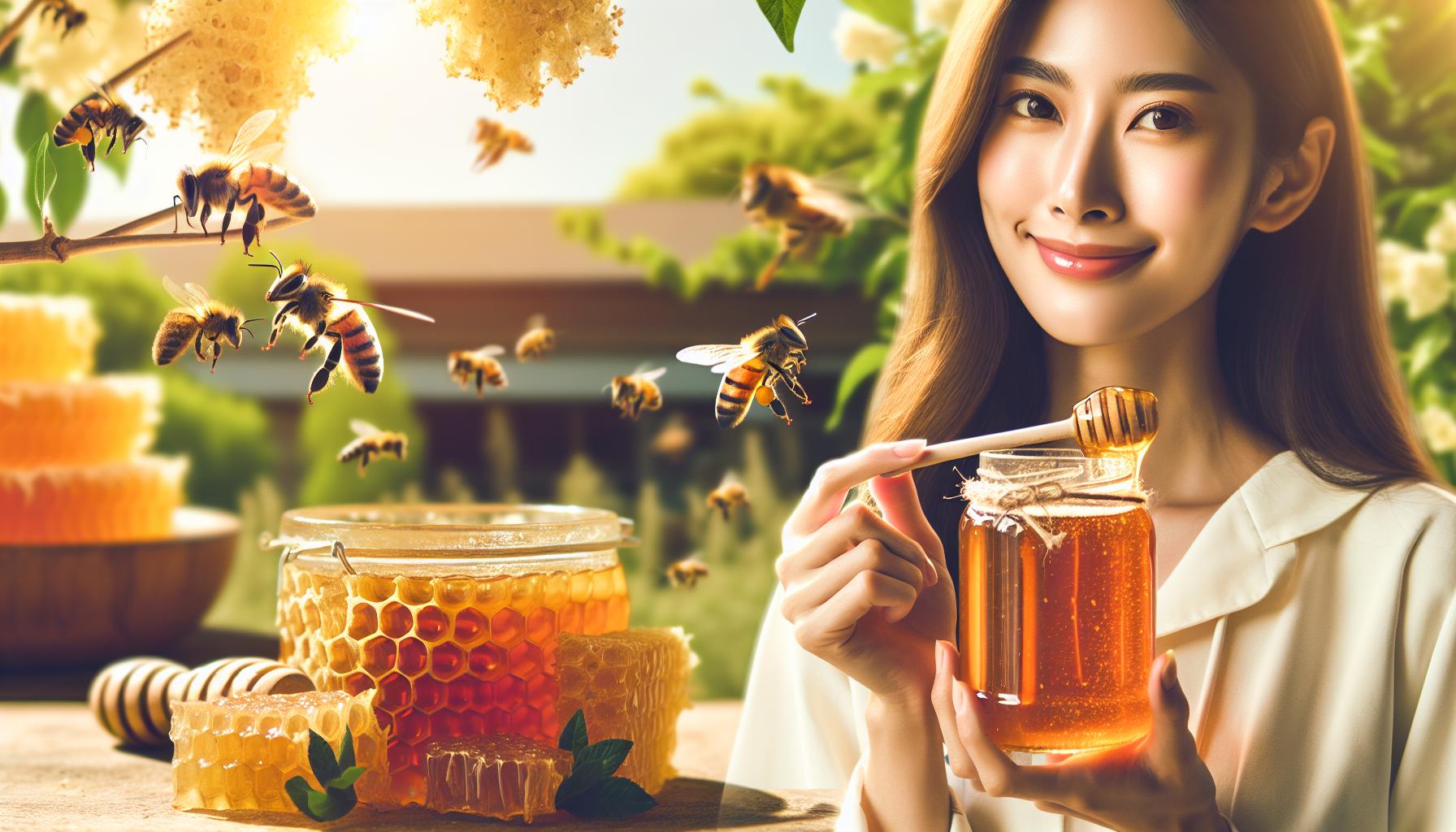Sweet, golden, and packed with nature’s goodness, raw honey has been a cherished natural resource for centuries. Unlike processed honey, raw honey remains unfiltered and unpasteurized, retaining its natural enzymes, nutrients, and antioxidants. This versatile pantry staple isn’t just about sweetness—it’s a powerhouse of health benefits that supports well-being in countless ways.
From soothing sore throats to boosting immune health, raw honey offers remarkable therapeutic properties. Its antibacterial and anti-inflammatory capabilities make it an age-old remedy for various ailments. Whether drizzled over toast, stirred into tea, or used as a beauty enhancer, raw honey’s benefits are as extensive as its uses.
Let’s dive into what makes raw honey so special, why it deserves a place in your daily routine, and how it can elevate your health and lifestyle.
What is Raw Honey?
Raw honey is honey extracted directly from the hive without undergoing pasteurization or excessive filtration. This minimal processing helps retain its natural composition, including beneficial enzymes, antioxidants, vitamins, minerals, and pollen.
Raw Honey vs. Processed Honey
Understanding the differences between raw and processed honey is key to appreciating its value:
-
Processing:
- Raw Honey: Strained to remove debris but not heated, preserving its natural properties.
- Processed Honey: Pasteurized at high temperatures, which destroys beneficial enzymes and antioxidants.
-
Nutritional Content:
- Raw honey contains essential vitamins (e.g., B6, C) and minerals (potassium, zinc) that are reduced or lost in processed honey.
-
Appearance:
- Raw honey is often cloudy or crystallized due to retained pollen and natural sugars.
- Processed honey has a clear, uniform look achieved through intense filtration and heating.
-
Pollen Content:
- Raw honey retains bee pollen, contributing to added health benefits, while processed honey typically lacks pollen.
How is Raw Honey Made?
The production of raw honey begins with bees collecting nectar from flowers. The nectar undergoes enzymatic conversion in the hive to create honey. Beekeepers then extract honeycombs, using methods like crushing or centrifugal force to release the honey. This honey is strained to remove wax and debris but remains unheated and unprocessed, preserving its natural goodness.
Nutritional Profile of Raw Honey
Raw honey’s unprocessed state makes it nutritionally superior to processed honey.
-
Vitamins and Minerals: It contains small amounts of vitamin C, B vitamins (e.g., B6, niacin, riboflavin), and minerals like calcium, magnesium, and potassium. These nutrients support muscle function, immune health, and energy production.
-
Enzymes and Antioxidants: Enzymes like glucose oxidase and antioxidants such as flavonoids help in digestion and combat oxidative stress. Darker varieties of raw honey often contain higher antioxidant levels.
Health Benefits of Raw Honey
-
Boosts Immunity: Raw honey’s antioxidants and antibacterial properties strengthen the immune system. For example, manuka honey is known for its potent antimicrobial effects.
-
Supports Digestive Health: It acts as a natural prebiotic, promoting gut health by nourishing beneficial bacteria. Enzymes in raw honey also aid in carbohydrate digestion.
-
Promotes Wound Healing: Raw honey can aid in treating wounds, burns, and ulcers due to its antibacterial and anti-inflammatory properties. It forms a protective barrier, keeping wounds moist and clean.
-
Provides Natural Energy: As a source of quick energy, raw honey’s natural sugars help sustain stamina without a rapid blood sugar spike.
Skincare and Beauty Uses
-
Natural Moisturizer: Raw honey’s humectant properties attract and retain moisture, making it an excellent remedy for dry skin.
-
Acne Treatment: Its antibacterial properties help reduce inflammation and clear clogged pores. Apply it as a mask or spot treatment for glowing skin.
Culinary Uses of Raw Honey
Raw honey’s flavor and versatility make it a favorite in cooking:
-
Sweetener Alternative: Use raw honey instead of refined sugar for added nutrients and a lower glycemic index. It’s perfect for teas, smoothies, and salad dressings.
-
Flavor Enhancer: Add depth to marinades, glazes, or baked goods. Its floral notes complement both savory and sweet recipes.
Potential Risks and Precautions
While raw honey is beneficial, there are precautions to consider:
-
Allergic Reactions: People allergic to pollen or bee products should avoid raw honey or consult a healthcare provider before consumption.
-
Infant Safety: Never give raw honey to infants under 12 months due to the risk of botulism.
-
Storage Tips: Store raw honey in a cool, dry place to prevent crystallization and maintain its quality.
Conclusion
Raw honey is a true gift from nature, offering a blend of health, beauty, and culinary benefits. Its rich nutrient profile and versatility make it a valuable addition to your daily routine. While enjoying its remarkable properties, remember to consume it responsibly and consult a healthcare provider if needed. By choosing high-quality raw honey, you can unlock its full potential and elevate your overall well-being.
Frequently Asked Questions
Q: What is raw honey?
A: Raw honey is unprocessed honey harvested directly from the hive, retaining its nutrients, enzymes, and antioxidants.
Q: How does raw honey differ from processed honey?
A: Raw honey is unheated and unfiltered, preserving its natural benefits. Processed honey undergoes pasteurization, which reduces its nutritional value.
Q: Is raw honey safe for everyone?
A: While raw honey is safe for most adults, it is unsuitable for infants under 12 months due to botulism risk. Allergy-prone individuals should exercise caution.
Q: How much raw honey should I consume daily?
A: Limit consumption to 1-2 tablespoons daily to enjoy its benefits without excessive sugar intake.
Q: Why does raw honey crystallize?
A: Crystallization occurs naturally due to glucose content. It doesn’t affect the quality and can be reversed by gently warming the honey.



